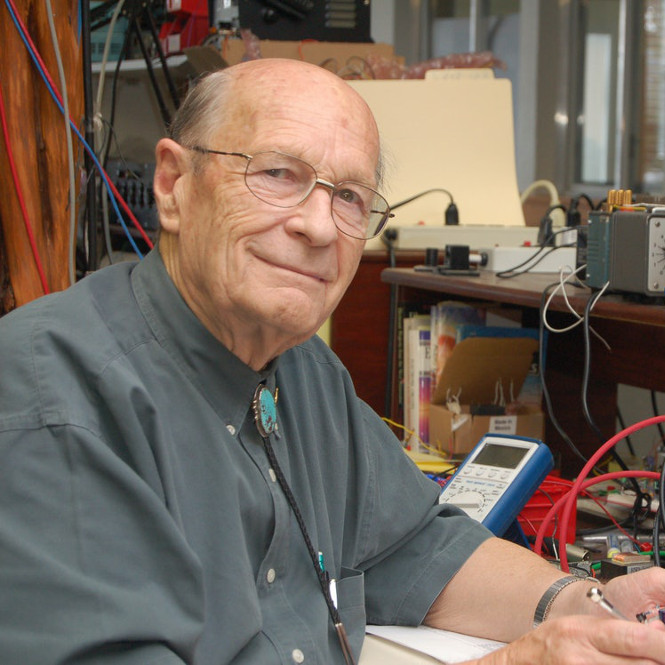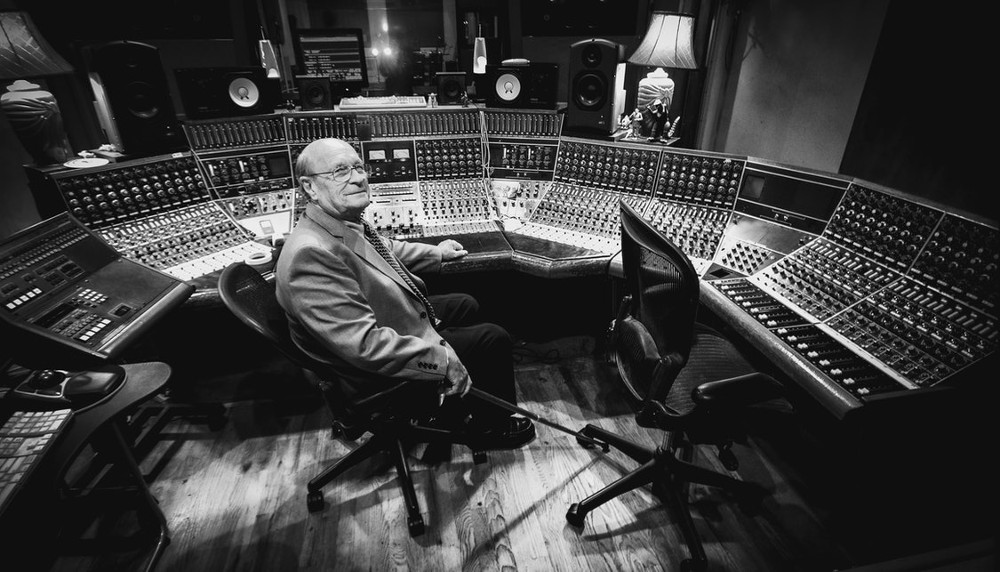Remembering Rupert Neve, Console Creator, 1926-2021
Generations of audio engineers have entered studios with the dream of making a name for themselves. Far fewer take it a step further by making a name of themselves—Rupert Neve was one of them.
On February 13th, his eponymous company Rupert Neve Designs announced that its namesake had passed away at the age of 94. His career spanned an incredible 80 years, encompassing a body of work that utterly disrupted and redirected modern recording. English-born and then raised in Argentina, Neve was a British Army communications support staffer in World War II before he even turned 18.
Clearly, Neve took the science of communications very seriously. He founded Neve Electronics in 1961 together with his wife Evelyn, then designed the first commercial recording console to use transistors. That mixing desk for London’s Phillips Recording Studio was a project that would set him squarely on the path of revolutionizing audio.
The Neve 50 and Neve 80 recording consoles would follow, and his reputation began to expand worldwide. The unique musicality of Neve’s designs quickly became desirable not just in his mainframe consoles, but in classic outboard like the 1073 mic pre, 33609 compressor, and coveted BCM10 sidecar.
Rupert and Evelyn sold Neve Companies in 1975, after which they established ARN Consultants followed by Focusrite Ltd. (The AMS-Neve brand we know today is the result of the original Neve companies being sold to Siemens in 1985, which then merged it with UK console manufacturer AMS (Advanced Music Systems) to form AMS-Neve.) The couple would move to Texas in 1994, and then began Rupert Neve Designs in 2005 as the HQ for his next-gen console and outboard designs.
Industry recognition was widespread. His honors include a 1997 Lifetime Achievement Technical GRAMMY Award, Studio Sound Magazine’s Audio Person of the Century Award in 1999, and an Audio Engineering Society (AES) Fellowship Award in 2006. There are 16 TEC (Technical Excellence and Creativity) Awards with Rupert Neve Designs.
There are other audio innovators whose names have become inexorable with their inventions, pioneers like Dolby and Moog are just two that come to mind. But for a long time in the studio world, it seemed there was no quicker shortcut for describing your audio approach than to say how you felt about his circuitry. If you were “A Neve person,” that proudly spoke volumes about how you recorded and mixed, the type of musicality that you went for. Prefer another console? One’s values lay elsewhere.
My own personal encounters with Mr. Neve were few, but memorable. In October 2005, I got to hear him deliver the 119th AES Convention Keynote Speech. It was an enthralling kickoff, where a huge room packed with at least 1,000 other audio engineers hung on his every word. (Note: You can hear Rupert Neve speak at length in this NAMM Oral History interview with NAMM Music Historian Dan Del Fiorentino.)
Later on, I spotted him on the show floor and found an excuse to ask him a question. I can’t recall the words of the exchange because I was too gaga to be speaking with the gentleman himself, who was as approachable and unassuming as he was accomplished.
Far more numerous, of course, were my encounters with his consoles. In my travels to hundreds of studios I’ve experienced gorgeous analog consoles of all makes and models, and many of them were vintage Neves. Each had its own breathtaking quality, always revered by its owner for its tanklike construction, confident charisma, and sonic properties. One of my longtime favorites in NYC was the vintage Neve 8068 at Chelsea’s Stratosphere Sound (now closed).
My all-time personal #1 Neve, however, was the one I encountered at the long-gone Amazing Barn in Conshohocken, PA. The studio’s owner, Andy Kravitz, had discovered a large 1972 or 1973 Neve console in Cuba and brought it up his astounding studio in-the-round, in a 350-year-old stone barn outside Philadelphia. Kravitz was sure that Rupert Neve had personally handwired the EQs containing the famed germanium transistors.
I spent the night in the studio and slept in the same big room with that console. I’ll never forget the Neve’s presence, glowing lights from its VU meters electrically bathing the space. The board seemed to breathe. It was more than meeting a magnificent machine—the inspired spirit of Rupert himself was here with me.
It’s not easy to make a mark like Rupert Neve did. He created some of the most sought-after gear on the planet, and positively affected the sound of countless recordings, many of which are yet to be made.
Imagine if Rupert had applied his gentle genius in some other direction. And imagine if his last name had been anything different than what it was – where would we be without “a Neve room” to record and mix? The world simply wouldn’t sound the same.
— David Weiss is an Editor for SonicScoop.com, and has been covering pro audio developments for over 20 years. He is also the co-author of the music industry’s leading textbook on synch licensing, “Music Supervision, 2nd Edition: The Complete Guide to Selecting Music for Movies, TV, Games & New Media.” Email: david@sonicscoop.com
Please note: When you buy products through links on this page, we may earn an affiliate commission.









[…] On February 13th, his eponymous company Rupert Neve Designs announced that its namesake had passed away Read more… […]